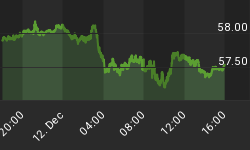Farmland has experienced a decade of strong absolute price appreciation as can be seen in Table 4 - including Canada which averaged over 10% per annum between 2002 and 2010. However, when comparing potential farmland investments and attempting to gauge return possibilities, rather than just absolute prices, you must consider the price being paid versus the productive capacity. This exercise allows an investor to normalize prices and make accurate comparisons across different parcels of land and regions. At Agcapita we use the price of a bushel of productive capacity as one of our investment filters - a metric somewhat akin to the price/earnings ratios for listed equities.
When you measure farmland in this fashion rather than on aboslute prices, the low cost of Canadian farmland is undeniable. In Table 1 you see that on average Canadian farmland is less expensive than a number of emerging markets on a productivity cost basis.
Table 1: Cost of Land per Tonne of Wheat Production

Source: Savills (USDA, Eurostats and various)
Then if you then factor in that Saskatchewan farmland is approximately one third the Canadian average price, you find that it is amongst the least expensive farmland in the world on both an absolute and a productivity cost basis. This fundamental discount is what I believe will drive outperformance of western Canadian farmland investments, Saskatchewan in particular, going forward.
Table 2: Average Canadian Farmland Values

Source: Savills (Statscan)
Saskatchewan farmland is competitive in another important area as well - rental yields. Annual cash rental yields in Saskatchewan are significantly higher than many other markets:
- UK farmland - 1% to 2%
- US (Iowa) farmland - 3% to 4%
- Canadian (Saskatchewan) farmland - 4% to 5%
A core reason for the recent increase in the value of farmland revolves around productivity growth. In the 1960s, agricultural yields increased approximately 3% per year, but by the 1990s had declined to less than 1% per year, despite the fact that global nitrogen fertilizer usage has increased dramatically. Projections are that agricultural output must double by 2050 based on population growth and dietary changes however the USDA Economic Research Service projects a 25% per year productivity gap assuming current trends continue (see Table 3 below).
Table 3: Global Agricultural Productivty Index

Source: Farm Foundation, NFP, USDA
Obviously, as it has in the past few years, this productivity gap will put upward pressure on agricultural commodity prices and in turn farmland prices going forward.
Farmland has outperformed relative to commercial ("CRE") and residential real estate ("RRE"), two asset classes with which it is sometimes compared. The level of farmland returns has been substantial in most markets - even in the US where real estate prices otherwise collapsed, a testament to the capital preserving qualities of properly priced farmland investments.
Table 4: Global Capital Growth (Annualized 2002-2010)

Source: Savills (IPD, USDA, Eurostat and various)
I must say that even though it is highly favourable, I make the comparison between farmland and CRE/RRE with some reservation. Though farmland is often included in the real estate asset class, it is more truly a hybrid of the real-estate and commodity asset classes. Farmland values to a large degree are a direct derivative of agriculture commodity prices - unlike RRE and CRE. This linkage, in part, is the appeal of farmland investments in Canada as agricultural commodity demand fundamentals are robust and land prices remain low.
As to the future, U.S. pension manager TIAA-CREF believes that farmland investments will continue to return 8% to 12% per year as global food demand increases. TIAA-CREF has $2.5 billion invested in farmland.
Based on low productivity prices, superior rental yields and global supply challenges we continue to believe in the strong growth potential of western Canadian farmland and will shortly be launching our fourth RRSP eligible fund - Agcapita Farmland Fund IV.
Regards
















